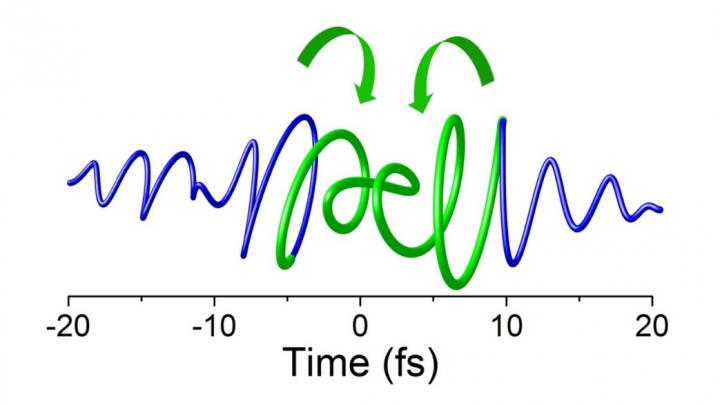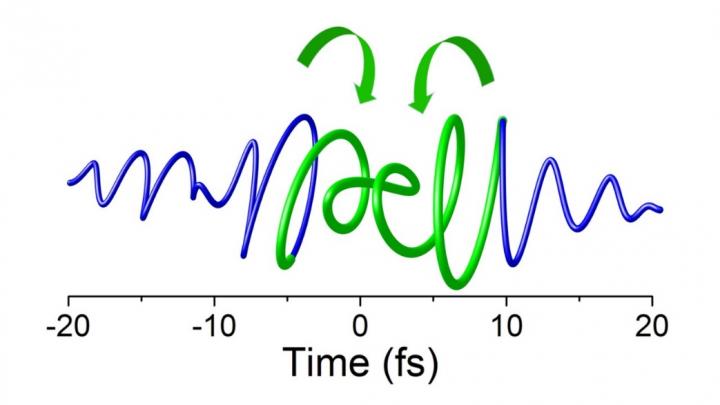
Credit: Graphics: Giuseppe Sansone
For the first time an international research team under the direction of Prof. Dr. Giuseppe Sansone at the Institute of Physics at the University of Freiburg has been able to completely characterize the complex evolution of weak electric fields. The team just published its research findings in the scientific journal Nature Photonics.
Light pulses are electromagnetic waves. Their characteristics such as the direction of oscillation, duration and intensity depend on the spatiotemporal evolution of their electric and magnetic fields. Both of these vectors can run in complex trajectories as a light pulse propagates – for instance, they can move along a circle, an elliptical or describe any variation thereof. The movement occurs on a timescale of several hundred attoseconds, which is much faster than any ordinary electronic or optoelectronic device can measure: an attosecond is a billionth of a billionth of a second.
In order to observe how the electric field moves anyway, the team developed a method using a so-called attosecond laser. "Using this new tool we were able to produce electrons in the form of wave packets that only last a few hundred attoseconds," explains Sansone. During their dynamics, electrons are very sensitive to any kind of external disturbance. The researchers leveraged this characteristic to modify the electrons' trajectories with weak visible light pulses. They were then able to measure how the trajectories had been altered, thereby deducing the intensity and direction of the electric field. "Our method will enable researchers in the future to have a complete characterization of electronic dynamics in solids by measuring the visible light reflected on its surface," says Sansone.
Researchers at the University of Jena, Max Planck Institute for Nuclear Physics in Heidelberg, the National Metrology Institute of Germany (PTB) in Braunschweig and the Politecnico in Milan and the Istituto di Fotonica e Nanotecnologie (Institute for Photonics and Nanotechnology) in Padua, Italy, contributed significantly to these findings.
###
Original publication:
P. A. Carpeggiani et al. (2017): Vectorial optical field reconstruction by attosecond spatial interferometry.
In: Nature Photonics. DOI 10.1038/nphoton.2017.73
Media Contact
Giuseppe Sansone
[email protected]
49-761-203-5738
############
Story Source: Materials provided by Scienmag





